Tireless Catalina
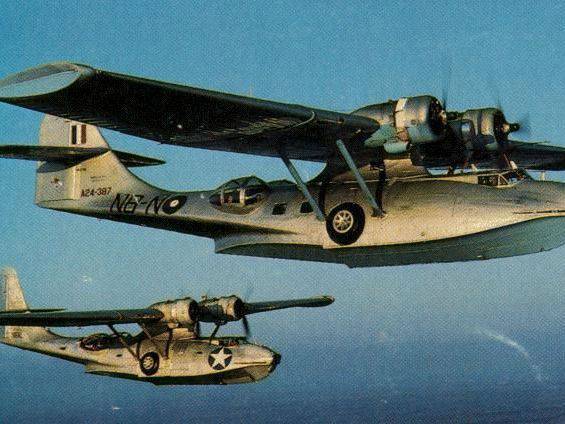
The famous "Dakota", it is Douglas DS-3, C-47 - the plane that broke the records of longevity. The first flight made in December 1935 of the year, and from then until today, "Dakota" carry passengers and cargo. But there is another long-liver - the Seaplane Consolidated Catalina. This flying boat took off just four months after the Dakota. At the beginning of the 21 century, about a hundred of these machines continued to fly, serving passenger lines in Canada, the United States and Norway.
Founded in 1922, the American company Consolidated from the California city of San Diego began its “career” with the release of sports and training aircraft. Later mastered small passenger and postal. Then flying boats. In 1930, she created the Commander twin-engine passenger flying boat, operated by Pan American on the New York - Rio de Janeiro - Buenos Aires line. In 1932, a PZY-1 patrol flying boat was created on the basis of Kommondor. fleet USA.
The chief designer of the firm "Consolidated" Isaac Laddon decided to create a new patrol flying boat on the technical conditions of the Navy from 1932 year. He took the boat PZY-1, which showed good seaworthiness, as a basis. Established on it a new wing and plumage.
The eight-seater twin-engine flying boat, which received the firm designation of the Consolidated 28, was a metal strut monoplane with a high wing on the pylon. The two-spar wing consisted of a rectangular center section and detachable trapezoidal consoles. The sock and the caisson formed a working skin, supported by stamped profiles. Tail portion with dural ribs and linen trim. Boat - duralumin monocoque. An anchor and a mooring cable are placed in the bow in the manhole from the left side. In front of the pylon, the navigator's hatch was mounted on the left deck on the upper deck, behind the pylon on the left and on the right were sliding hatches for onboard machine-gun systems. For the second redan down there is the hatch of the lower machine-gun installation. Podkrylnye floats were lifting, folding along the wing span and forming the end edges. Moreover, the racks and struts were retracted into the recess on the lower surface of the wings.
Two Pratt and Whitney Twin Wasp R1830-58 two-row radial air-cooled engines with 823 horsepower mounted on the tip of the center section. The bow of the shooter with a rotating glazed turret for a Colt-Browning machine gun of caliber 7,62 mm with 1000 ammunition ammunition was located in the bow of the boat. In the second compartment - pilot's cabin, with two places nearby. Behind the cockpit on the left is the navigator's compartment with the astroluk above, on the right is the radio room. In the next compartment was equipped with a cabin with berths for the rest of the crew, above it in the pylon is equipped with a cabin mechanic with instruments that control the operation of motors. Next - onboard machine-gun posts for two Colt-Browning machine guns on pivot rigs with ammunition for 2000 cartridges. For waterproof bulkhead - lower rifle set with the same machine gun and 500 ammunition ammunition. In the tail of the aircraft is a compartment for supplies and equipment. Next to the toilet. Bomb-holders on the underside of the center-section can carry four bombs of 454 kg or eight of 227 kg or two torpedoes of 908 kg.
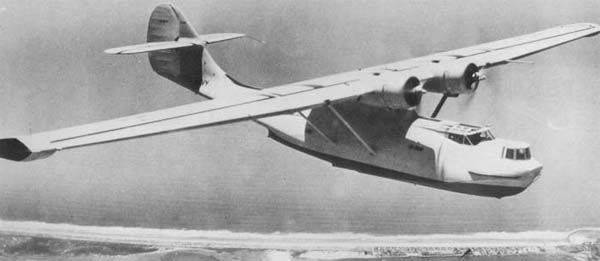
The aircraft under the military designation XP3Y-1 took off 28 March 1936. Tests have shown that it has a long range (patrol time up to 20 hours) with a significant payload. The car received a new designation HRVY-1 (PB - patrol bomber) or the company PBY-28.
In October, 1936 launched the first series of РBY-1 from 60 machines with Pratt and Whitney “Twin Wasp” R1830-64 engines with 850 hp power. This model was produced in the USSR under a license under the brand GTS (seaplane transport).
Since May, 1937, the company has released the second series of 50 PBY-2 aircraft. The third of the 66 PBY-3, was equipped with Pratt and Whitney "Twin Wasp" R1830-66 engines with HP 1000 power. and has been produced since May 1938. The following 33 machines of the PBY-4 modification received more powerful engines of the same company R1830-72 using the 1050 hp and horizontal plumage of the new form. In the summer of the 1939 of the year, the first PBY-50 of the UK ordered 4 aircraft was delivered to the Felixstone test base of the British Navy. According to the English system, they received the designation Catallina I (Catalina). This sonorous name was soon called PBY aircraft both in America and around the world.
In the middle of 1940, the Pratt and Whitney R5-1830 hp X-engines, modified vertical tail, and teardrop-shaped blisters on the on-board machine gun were installed on the aircraft, designated PBY-82. They launched a series of pre-war 1200 aircraft and 70 aircraft in 586 — 1940.
In Britain, the aircraft received the designation Catalina II. The need to actively combat the German and Japanese ships and submarines demanded an increase in the production of patrol aircraft. The company could not cope with the orders, and thus the production of PBY-5 beginning firm Boeing on its Canadian branch in Vancouver under the designation RV2V-1 (240 aircraft) and RV2V-2 with surveillance radar in a large fairing is mounted on the deck in front of the wing (50 aircraft) . In England, they received the designation Catalina IVA and Catalina IVB, respectively.
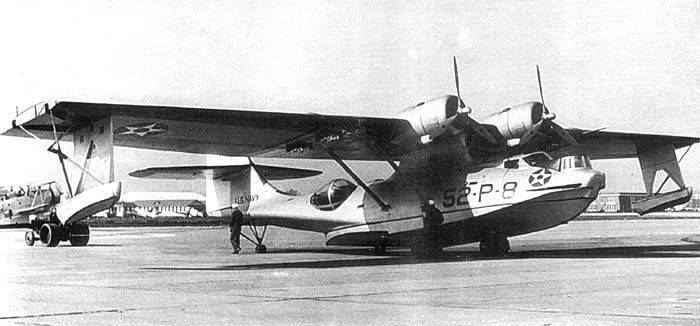
In early 1939, the first of the serial boats PBY-4 was converted into an amphibian. The main landing gear retracted into the niches on the sides of the boat, and the front leg - in a special compartment in the bow of the boat and was closed by sashes. Amphibian was tested under the brand name XPBY-5A and showed flight characteristics that are almost not inferior to the boat version. Since December 1941, PBY-5 began to be mass-produced in the version of amphibians with Pratt and Whitney R1830-92 engines with a capacity of 1200 liters. from. At the Consolidated plant, amphibians were produced in the variants of patrol bomber PBY-5A and reconnaissance OA-10. Their production was also launched by the Canadian Vickers company in Montreal under the designation PBY-1 "Kanso" for the fleet (149 aircraft) and OA-10A for the army aviation USA (240 aircraft). In Britain, amphibians were named after Catalina IIIA.
The state plant of the United States Navy NAF in Philadelphia, which received an order for the production of the PBY-5 flying boat, was not limited to simple copying. Experts on the results of hydrodynamic tests redesigned it. The elongated nose, the new design of the redans and the third, additional, redan under the tail of the boat improved the seaworthiness of the aircraft. He also received a different nose turret, new wing floats and a tail of increased height. Produced under the designation PBN-1 "Nomad". From the 156 138 aircraft was delivered to the USSR, several aircraft to the UK, where they were named Catalina VI.
In April, 1944, the firm "Consolidated" began production of the latest production version of "Catalina" - PBY-6A. It was a PBY-5A amphibian with the tail of the PBN-1 aircraft. In the version of the scout had the designation OA-10В. 235 pieces of PBY-6А (of which 48 aircraft were delivered to the USSR) and 75 - OA-10В were released.
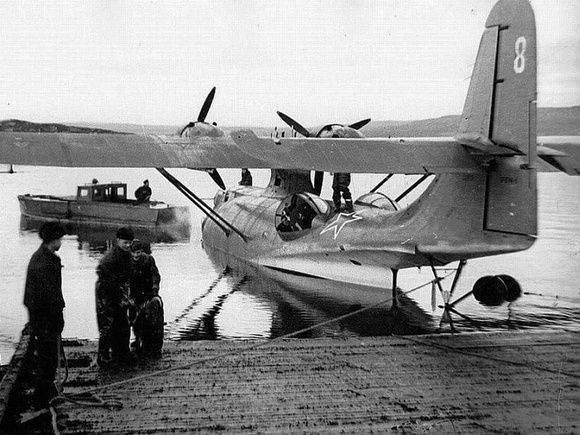
Total released 3290 "Catalina" of all modifications. After the war, a large number of aircraft were transferred to Norway, Sweden, France, Indonesia, Argentina, Holland and other countries. Many converted to use on passenger lines.
Soviet aviation, which became famous for record flights throughout the 1930s, was still far behind in some classes of aircraft. In the rank of these "unlucky" and got sea planes. Therefore, in the USSR they decided to start production of the best foreign models under license.
In 1937, the United States purchased a license to manufacture the PBY-1 “Consolidated” flying boat (under the brand name PBY-28). For the organization of production from the United States delivered three cars in disassembled form. With the help of American specialists, the serial production of the aircraft under the designation GTS was adjusted.
With sufficient glider strength and light weight, the aircraft had a rather complicated and time-consuming design. This led to the termination of its release already in the 1940 year. In total, the 30 GTS was released, including three assembled from American parts. The GTS, in contrast to the American prototype, was equipped with Soviet two-row M-87 and M-88 motors with power 950 and 1000 hp. To adjust their cooling on the hoods, front plates with adjustable louvers were installed. Rifle armament consisted of four ShKAS mobile machine guns caliber 7,62 mm.
The Air Force did not show much interest in the aircraft. Soon, the disarmed GTS transferred for the transportation of passengers and cargo to the command of the Main Sea Route. Civilian variants received the designation MP-7 (Sea passenger). They flew with M-62IR engines with 850 horsepower, and took on board up to twenty passengers.
In Glavsevmorputi cars had onboard numbers H-244, H-274, H-275, H-308, H-337. But the GTS were not the first "catalina", appeared in our sky. To search for the missing 12 on August 1937 of the H-209 aircraft, on which the crew of Sigismund Levanevsky flew across the North Pole to America, the PBY-1-3 Cuba with a tail number L-2 was purchased in the USA. On it, the Canadian explorer of the Arctic and Antarctic Sir Hubert Wilkins already 23 August flew to Cape Barrow in Alaska, where in August and September 1937 made five flights into the depths of the Central Arctic. In January-February - three more flights, two of which are in the polar night. During the February Wilkins traveled in close proximity to the North Pole. 10 March 1938, he made one last attempt to find Levanevsky.
In the summer of the same year, L-2 was overtaken to Moscow. After changing the USSR letters on board to the USSR, the aircraft, after a short operation, was converted into a military one. A glassed turret with a ShKAS machine gun was installed on the nose, under the center-section - six bomb racks for the FAB-500, FAB-250, FAB-100 bombs, DAP smoke devices, etc., mounted on-board machine guns, mounted ring turrets with machine guns Shtekas, etc., mounted. blisters. In the lower hatch installation mounted SHKAS machine gun on the pivot. All these improvements, with the exception of blisters on onboard installations, were used on serial GTS.
During the war years, within the framework of the supply of weapons under Lend-Lease, our country received Catalina-type aircraft in modifications of amphibians of the PBY-5A type (number unknown), PBY-6А (48 machines) and flying boats PBN-1 (138 pieces).
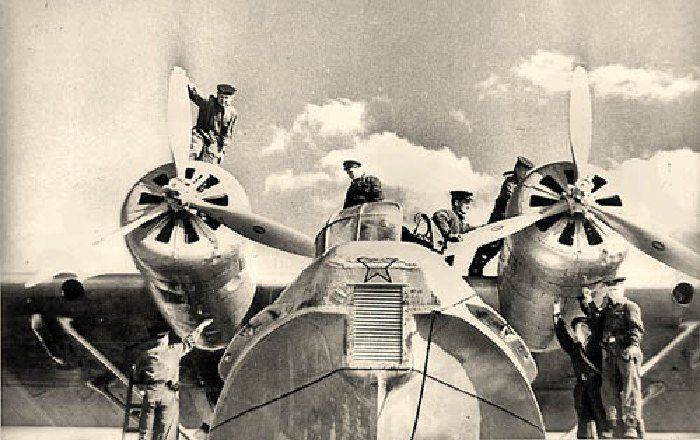
From 25 May to 26 June 1944, a group of 47 PBN-1 aircraft for the Northern Fleet made an 8350-kilometer flight over the “northern” route from the USA to Murmansk via Reykjavik. Part of the flight in 3500 km from Iceland to the Barents Sea was overcome without landings, over the open sea. From 25 August to 11 September 1944 of the Nomad 30 aircraft for the Pacific Fleet made a flight along the “eastern” 8350 km long route from the American island of Kodiak through Anadyr, Magadan, Nikolaev-on-Amur to Vladivostok. Pilots of the Black Sea and Northern Fleets flew 18635 (!) Kilometers from Puerto Rico via Trinidad, Belem and Natal in Brazil, Banjul in Gambia, Kenitra in Morocco, Gabes in Tunis, Egypt, Baghdad, Baku to Sevastopol on the “southern” route. Part of the way in 3373 km from America to Africa passed the 18-hour non-stop throw.
Flying boats received by the Soviet Union were actively used to guard Allied convoys en route to Murmansk. Were in service with the Pacific and Black Sea fleets.
When mastering the machines, our pilots encountered one problem - the Americans provided documentation only in English. But the solution was quickly found. Pilots and technicians closely watched the action of the units of the flying boat, while the pilot in the cockpit pressed the toggle switches. Having determined the purpose of the toggle switch, the mechanics sealed the inscription on an English medical plaster and wrote it in Russian.
After the war, some of these aircraft were disarmed and transferred to Aeroflot and Polar Aviation. There they were used to transport passengers, cargo, aerial photography. After the development of the resource by American engines on several PBY-1 aircraft, they installed the Shvetsov ASH-82FN engines with the HP 1850 power. This increased the take-off weight from 12250 to 17170 kg and the ceiling to 9000 meters. One of them, under the designation KM-2 with a tail number H-481, was operated in Siberia and the Arctic until the end of the fifties.
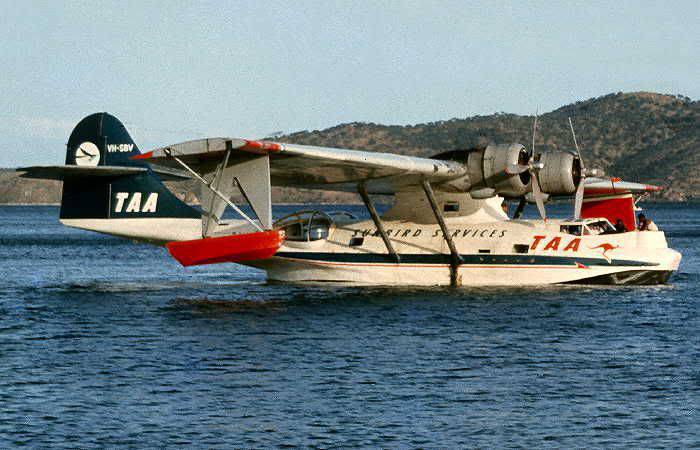
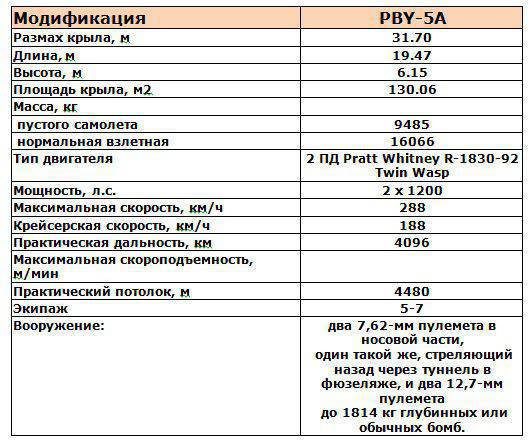
Sources:
Ivanov S. PBY CATALINA // War in the air. No.118. C.6-9, 12-16.
Kotelnikov V. Seaplanes // Aviacollection. 2003. No.2. C.49-51.
Zelenkov V. Close acquaintance // Wings of the Motherland. 1992. No.9. С16-17.
Kotelnikov V. PBY "Catalina" // Aviakollektsiya. 2015. No.2. C. 2-13.
Obukhov V., Kulbaka S., Sidorenko S. Planes of the Second World War. Minsk: Potpourri, 2003. C.439-440.
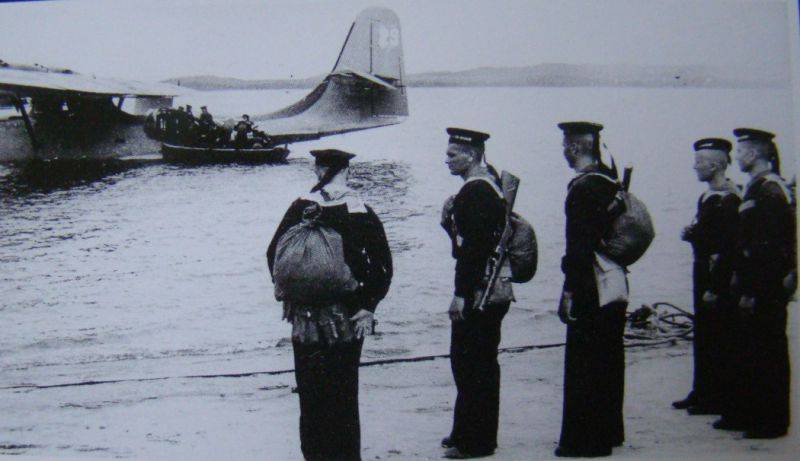
Information